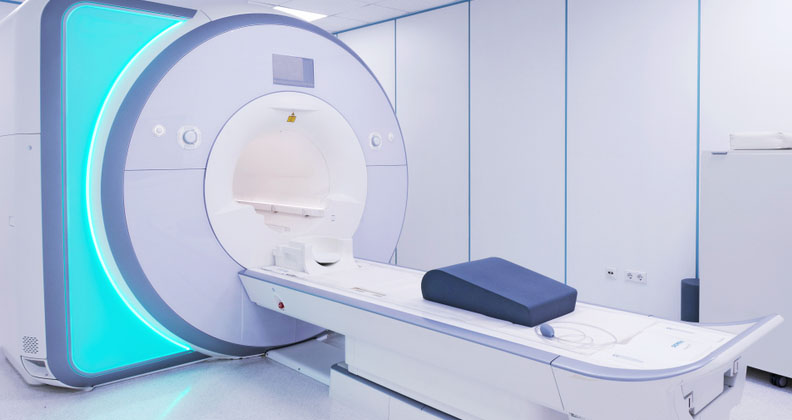
Anytime FDA releases new guidance, orthopedic companies must complete a learning curve as they seek to interpret the language and update their processes. The Orthopaedic Surgical Manufacturers Association (OSMA) Spring Meeting that was recently held in Washington, D.C., focused on updates to biocompatibility requirements and magnetic resonance (MR) testing and labeling.
FDA released new biocompatibility guidance in 2020 and the MR compatibility guidance in 2021. The recommendations have created confusion around testing protocols, ultimately leading to deficiencies during regulatory submission processes.
OSMA, which advocates for clear, consistent and efficient implementation of regulations and standards, brought together industry, FDA, testing firms and regulatory consultants to discuss issues with implementing the guidance documents. Both topics are highly complex and were given hours of attention at the meeting. Our high-level recap touches on the areas in which industry is running into the most trouble during regulatory submissions.
Biocompatibility
FDA’s updated stance on biocompatibility is linked to ISO 10993-1 and a risk management process. In 2020, we reported that the update was meant to eliminate a check-box approach to determine biocompatibility testing requirements. The changes to the guidance and the standard re-emphasized the need for orthopedic companies to better understand and characterize the materials, processes and risks associated with their devices.
“For many years in orthopedics, life was pretty good if surgical-grade materials were used. Many of our clients could certify biocompatibility based on prior clearances,” said Janice M. Hogan, Partner at Hogan Lovells. “When the biocompatibility guidance evolved, that started to change. Companies could no longer rely on prior certifications, and there was much more focus on the manufacturing process.”
FDA is placing greater scrutiny on biocompatibility when there are differences in the test article and the final finished device. The agency seeks a deeper explanation and rationalization behind the reason for the difference, whether it’s related to the material used or the manufacturing process. FDA also notes that companies may need to conduct and show exhaustive extraction studies and surface characterization information with their submissions.
Hogan said that there’s a gap in understanding with respect to how much detail companies need to provide and what subtle changes in the material or manufacturing process FDA will tolerate before requiring repeat testing.
FDA provided a deficiency summary of concerns that are often revealed during biocompatibility and chemical characterization reviews.
Common biocompatibility deficiencies include:
- A lack of adequate assessment of manufacturing materials and processes
- Unclear language when indicating predicate rationale
- Test article does not represent the final finished device
- Testing method does not utilize worst-case extraction condition
- No justification is provided when cytotoxicity testing grades of >1 are expected
Common chemical characterization deficiencies include:
- Extraction testing conditions do not represent worst-case clinical exposure
- Deviation of analytical evaluation threshold does not reflect sources of instrument variability inherent to semi-qualitative techniques
- Standard selection and concentration ranges do not reflect sample analyses or produce a conservative estimate of quantities for method validation
FDA, OEMs, regulatory consultants and testing firms spoke on the topic of biocompatibility. They all stressed the importance of companies having a clear understanding of what FDA expects in a testing protocol before executing the plan. Device testing is an expensive and time-consuming endeavor. Additionally, few labs possess the testing capabilities orthopedic OEMs seek. Due to these factors, Hogan said FDA pushing back on biocompatibility test pathways or results would likely kill 510(k) submissions.
MRI Compatibility
FDA’s updated guidance on MR concerns recommends ways to assess the safety and compatibility of medical devices in an MR environment and the format for magnetic resonance imaging (MRI) safety information in medical device labeling.
Industry is focused on the need to develop a card that details the MRI status of a patient’s implanted device, and testing specifications around device heating and tissue of interest. The latter two factors have received the most attention from FDA during submission processes.
Specifically, the updated guidance notes that “The radiofrequency (RF) and time-varying gradient fields (dB/dt) of the MR system can induce heating of the tissue adjacent to the medical device and/or heating of the medical device itself. This hazard should be addressed for all medical devices anticipated to enter the bore of the MR system.” For certain devices, FDA wants industry to share scanning data for up to one hour to better understand a device’s heating variables.
A large orthopedic OEM at the OSMA meeting noted that its in vivo simulation always captured types of tissues, including bone. They faced many questions from FDA about tissue of interest and were asked to show worst-case determination in their in vivo translation. The request from the agency isn’t called out in the guidance and there are no standards in place, according to the company. The company was forced to create a draft protocol, share it with FDA and then complete additional testing to receive clearance for its joint replacement and spine implants.
FDA representatives who presented at the OSMA meeting identified several primary testing and labeling deficiencies:
- Full test reports are not provided
- Worst-case rationale is not provided
- Device testing was conducted on a different device
- Providing testing for a component when the device is intended to be used only as a construct
- Spatial gradient field is less than 20T/m
OEMs, FDA, testing labs and regulatory consultants all spoke on the complexity of the topic, especially when industry is also accounting for MR updates to ASTM and ISO standards, as well as international regulations. They noted that companies need dedicated internal or external expertise to tackle MR compliance.
The discussion around biocompatibility and MR conditional labeling centered on the gray areas of FDA’s latest guidance and whether gaps in understanding can be filled by developing position papers or influencing future guidance and standards. OSMA has prioritized the two topics and seeks orthopedic OEMs to share their experiences and collaborate moving forward. The organization will speak at OMTEC in June to further detail the situation and gather industry input.
CL
Carolyn LaWell is ORTHOWORLD's Chief Content Officer. She joined ORTHOWORLD in 2012 to oversee its editorial and industry education. She previously served in editor roles at B2B magazines and newspapers.




